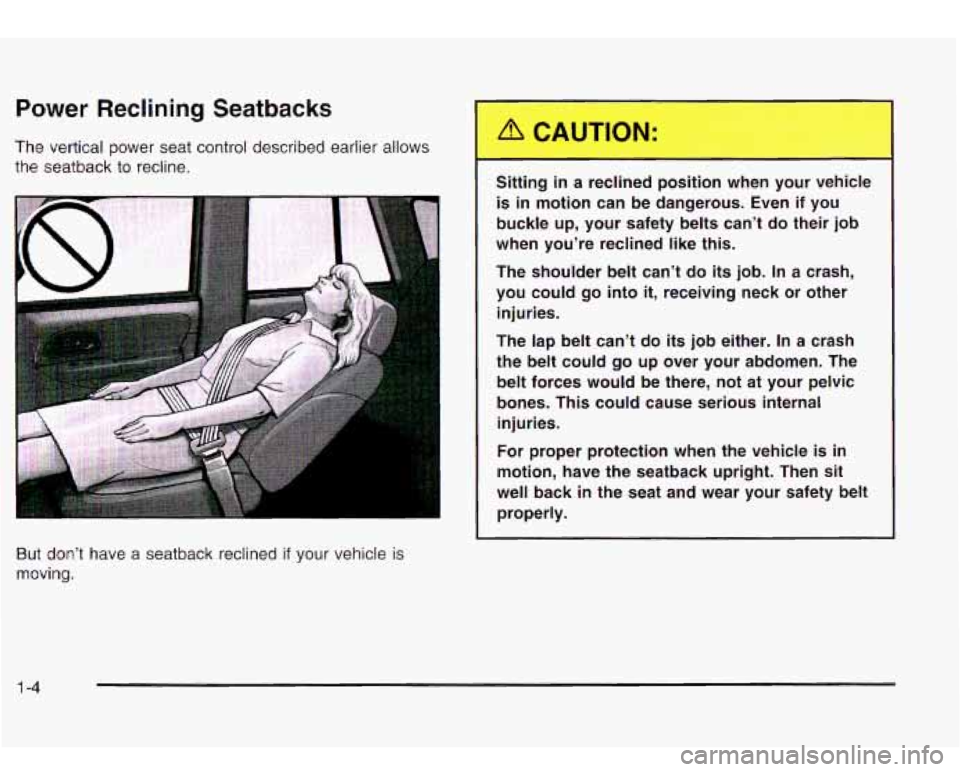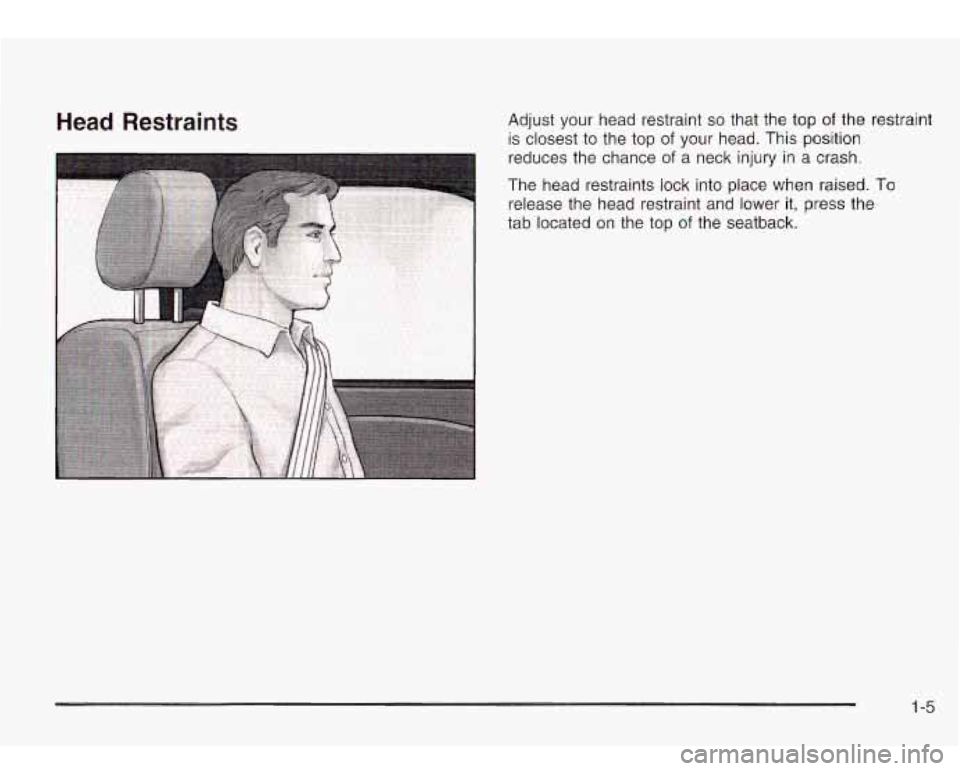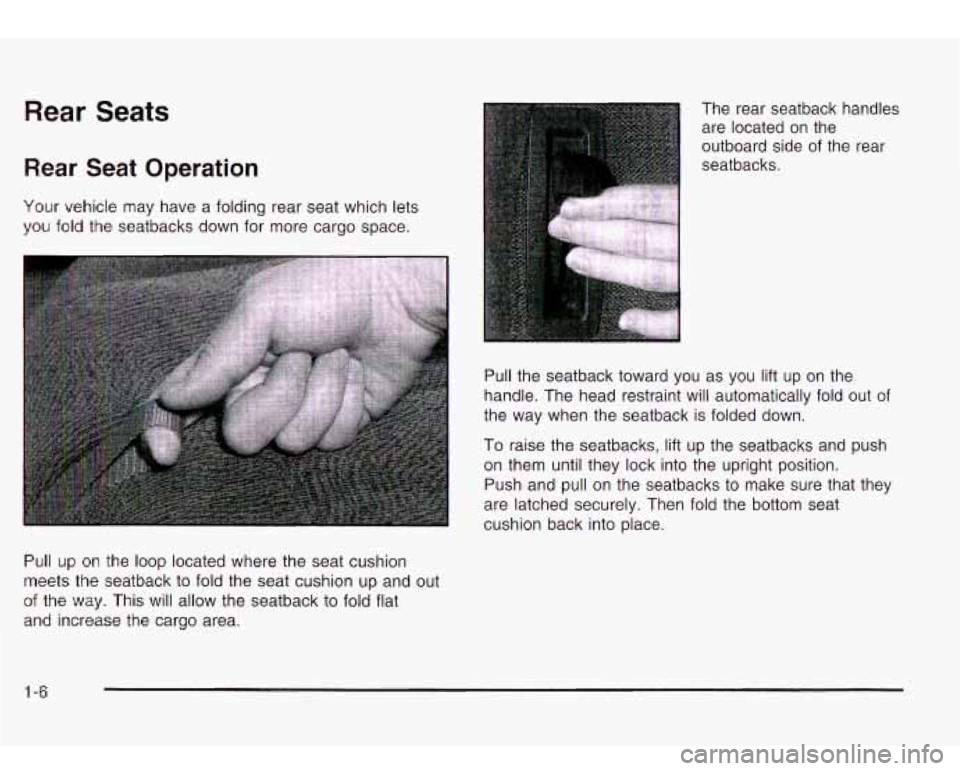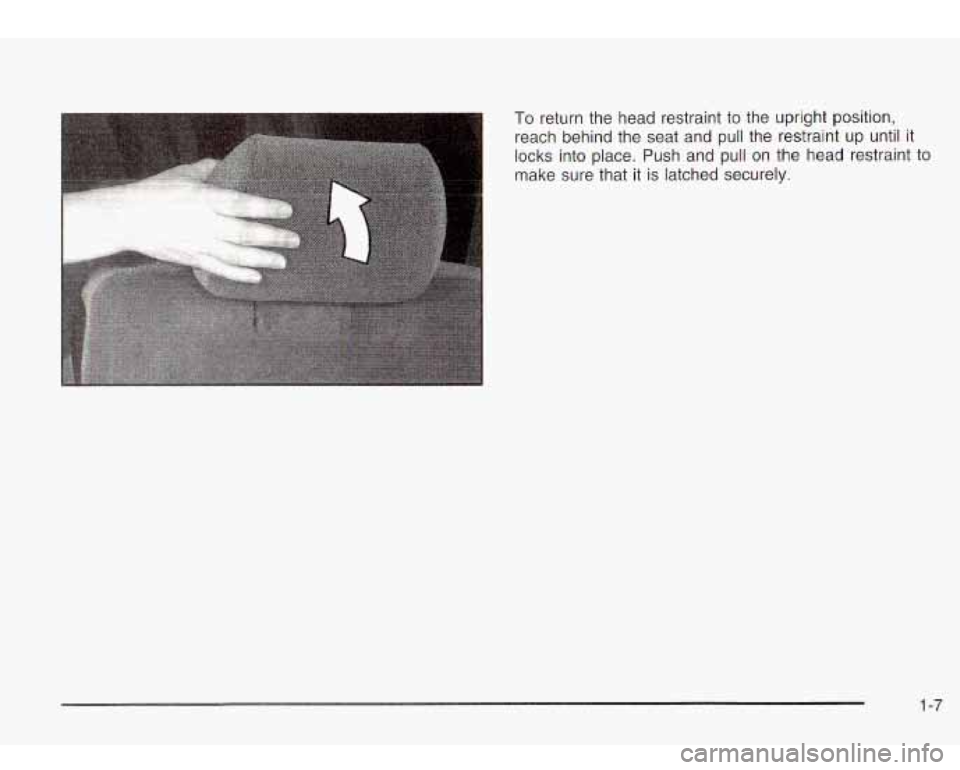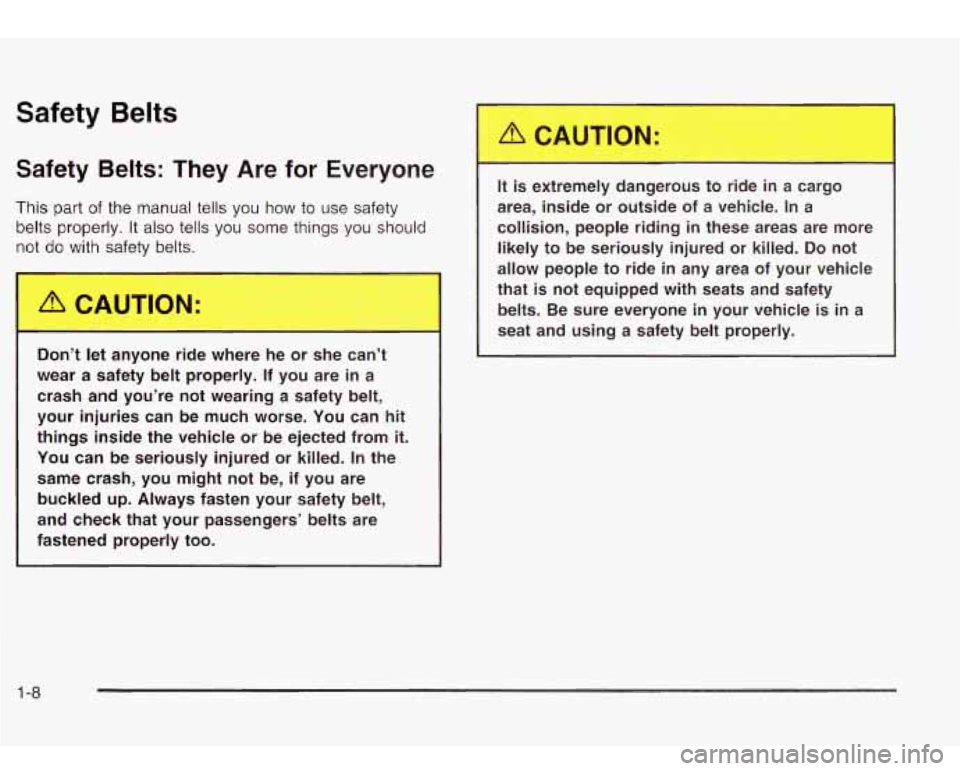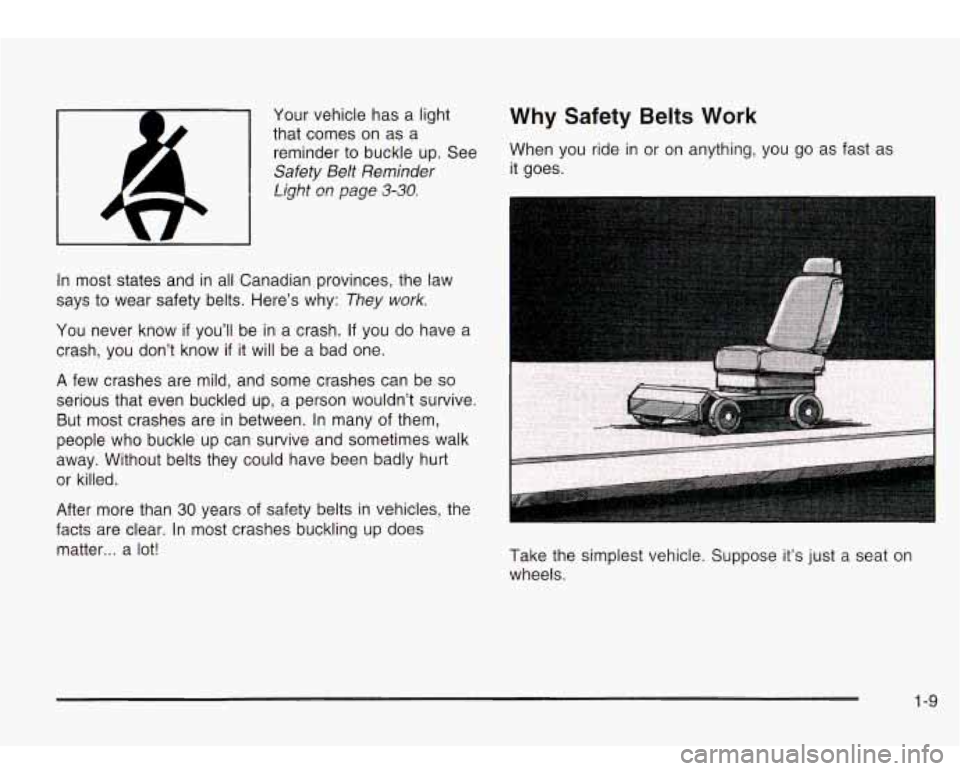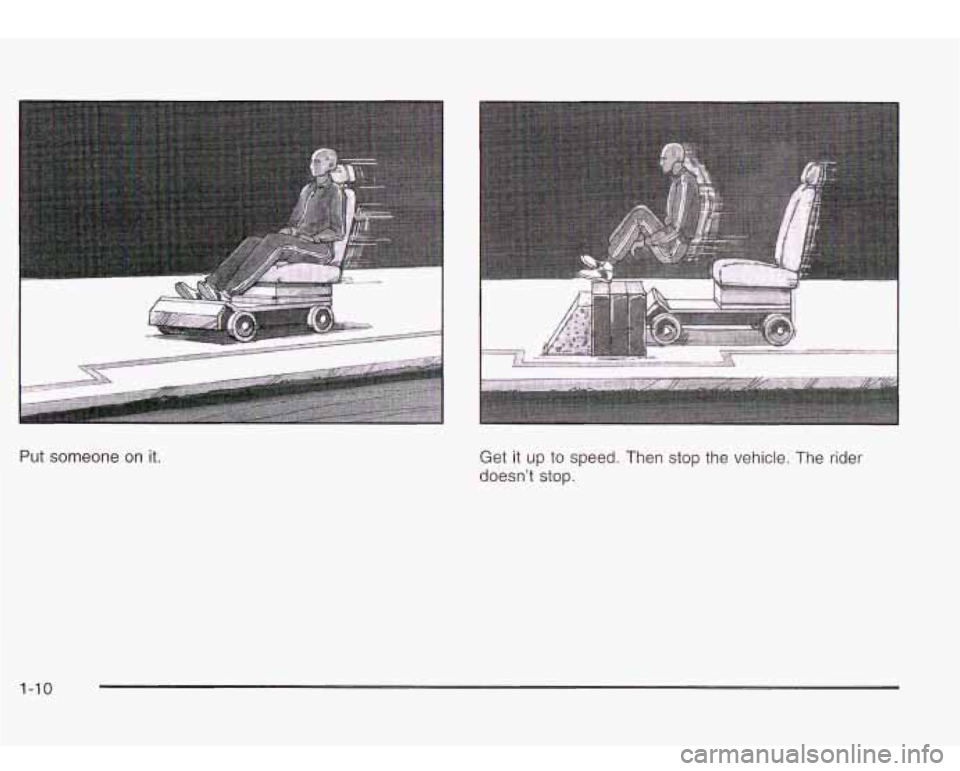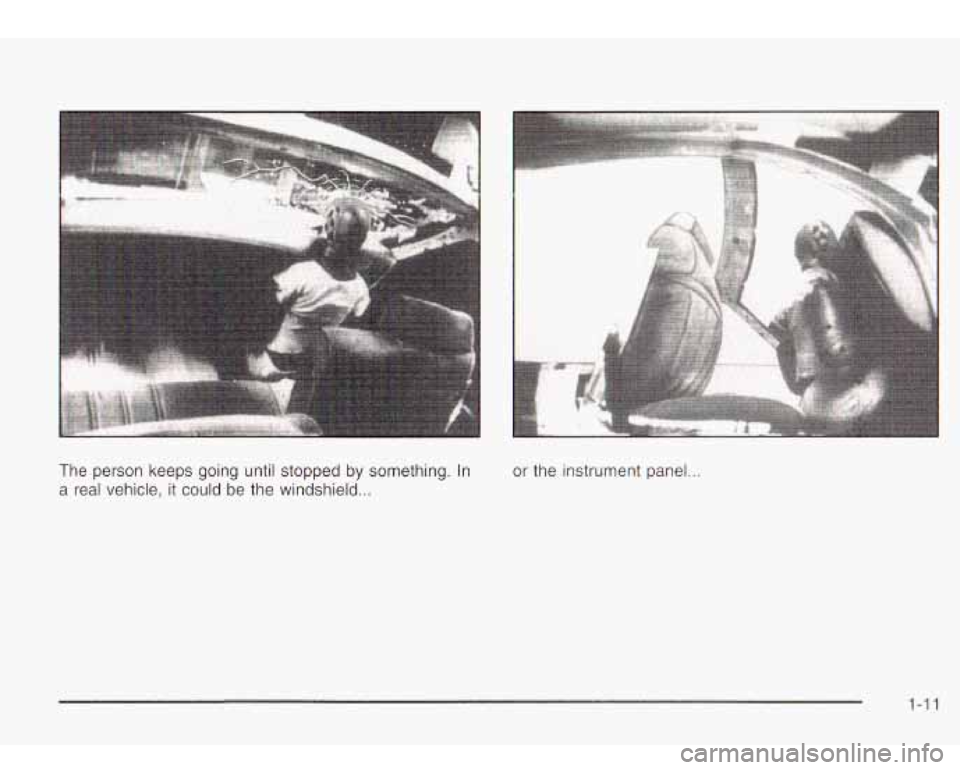Oldsmobile Bravada 2003 s User Guide
Bravada 2003
Oldsmobile
Oldsmobile
https://www.carmanualsonline.info/img/31/9574/w960_9574-0.png
Oldsmobile Bravada 2003 s User Guide
Trending: transmission oil, wheel size, oil capacity, clock setting, brakes, light, wheel torque
Page 11 of 410
Power Reclining Seatbacks
The vertical power seat control described earlier allows
the seatback to recline.
Sitting
in a reclined position when your vehicle
is in motion can be dangerous. Even if you
buckle up, your safety belts can’t do their job
when you’re reclined like
this.
The shoulder belt can’t do its job. In a crash,
you could go into
it, receiving neck or other
injuries.
The lap belt can’t
do its job either. In a crash
the belt could go up over your abdomen. The
belt forces would be there, not at your pelvic
bones. This could cause serious internal injuries.
For proper protection when the vehicle is in
motion, have the seatback upright. Then sit
well back
in the seat and wear your safety belt
properly.
But don’t have a seatback reclined if your vehicle
is
moving.
1 -4
Page 12 of 410
Head Restraints Adjust your head restraint so that the top of the restraint
is closest to the top
of your head. This position
I reduces the chance of a neck injury in a crash.
The head restraints
lock into place when raised. To
release the head restraint and lower it, press the
tab located on the top
of the seatback.
I -5
Page 13 of 410
Rear Seats
Pull up on the loop located where the seat cushion
meets the seatback to fold the seat cushion up and out
of the way. This will allow the seatback to fold flat
and increase the cargo area.
. .... ...
1-6
Page 14 of 410
Page 15 of 410
Safety Belts
Safety Belts: They Are for Everyone
This part of the manual tells you how to use safety
belts
properly. It also tells you some things you should
not do with safety belts.
Don’t let anyone ride where he or she can’t
wear a safety belt properly.
If you are in a
crash and you’re not wearing a safety belt,
your injuries can be much worse.
You can hit
things inside the vehicle or be ejected from it.
You can be seriously injured or killed. In the same crash, you might not be, if you are
buckled up. Always fasten your safety belt,
and check that your passengers’ belts are
fastened properly too.
It is ext ly dangerous to rid n a cargo
area, inside or outside of a vehicle. In
a
collision, people riding in these areas are more
likely to be seriously injured or killed.
Do not
allow people to ride
in any area of your vehicle
that is not equipped with seats and safety belts. Be sure everyone in your vehicle is in a
seat and using
a safety belt properly.
1 -8
Page 16 of 410
In most states and in all Canadian provinces, the law
says to wear safety belts. Here’s why:
They work.
You never know if you’ll be in a crash. If you do have a
crash, you don’t know
if it will be a bad one. I
1-9
Page 17 of 410
Put someone on it. Get it up to speed. Then stop the vehicle. The rider
doesn't stop.
1-10
Page 18 of 410
Page 19 of 410
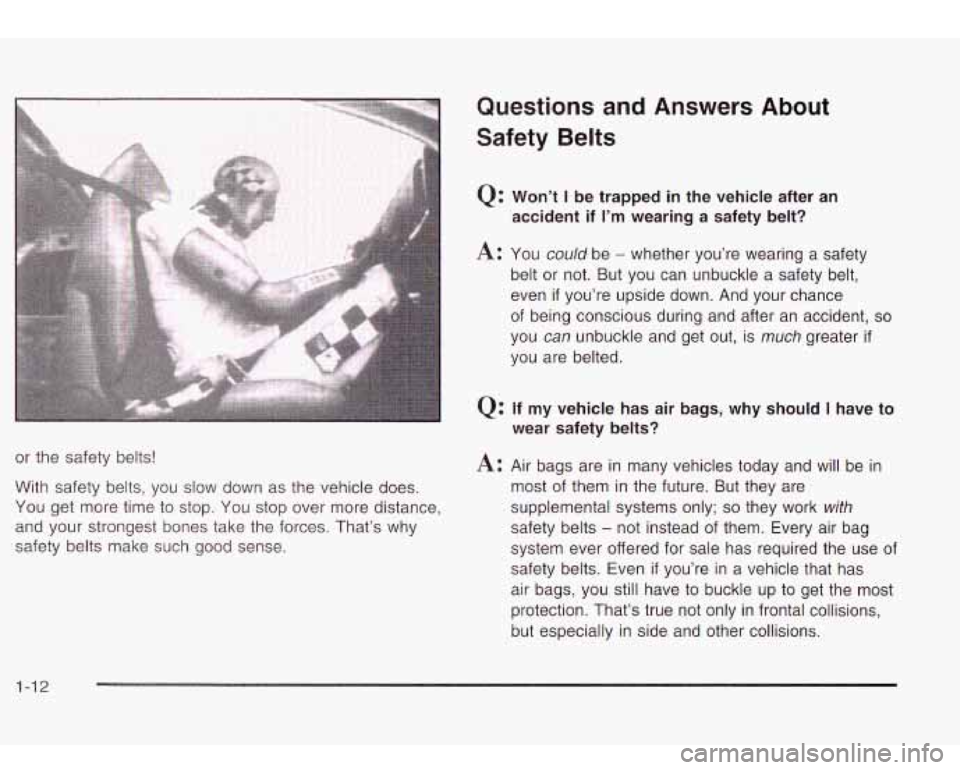
or the safety belts!
With safety belts, you slow down as the vehicle does.
You get more time to stop. You stop over more distance,
and your strongest bones take the forces. That’s why
safety belts make such good sense.
Questions and Answers About
Safety
Belts
Q: Won’t I be trapped in the vehicle after an
accident
if I’m wearing a safety belt?
A: You could be - whether you’re wearing a safety
belt or not. But you can unbuckle a safety belt,
even
if you’re upside down. And your chance
of being conscious during and after an accident,
so
you can unbuckle and get out, is much greater if
you are belted.
Q: If my vehicle has air bags, why should I have to
wear safety belts?
A: Air bags are in many vehicles today and will be in
most of them in the future. But they are
supplemental systems only;
so they work with
safety belts - not instead of them. Every air bag
system ever offered for sale has required the use of
safety belts. Even
if you’re in a vehicle that has
air bags, you still have to buckle up to get the most
protection. That’s true not only in frontal collisions,
but especially in side and other collisions.
Page 20 of 410
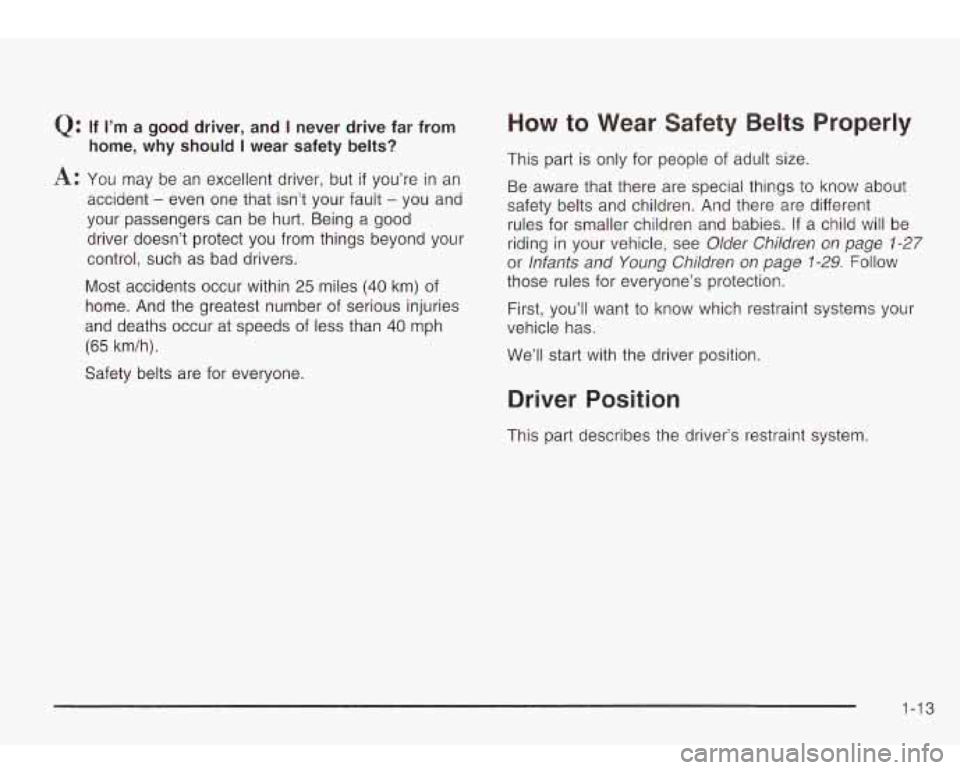
0: If I’m a good driver, and I never drive far from
A: You may be an excellent driver, but if you’re in an
accident
- even one that isn’t your fault - you and
your passengers can be hurt. Being a good
driver doesn’t protect you from things beyond your
control, such as bad drivers.
home, why should I wear safety belts?
Most accidents occur within 25 miles (40 km) of
home. And the greatest number of serious injuries
and deaths occur at speeds of less than
40 mph
(65 km/h).
Safety belts are for everyone.
How to Wear Safety Belts Properly
This part is only for people of adult size.
Be aware that there are special things
to know about
safety belts and children. And there are different rules for smaller children and babies.
If a child will be
riding in your vehicle, see
Older Children on page 1-27
or lnfants and Young Children on page 7-29. Follow
those rules for everyone’s protection.
First, you’ll want
to know which restraint systems your
vehicle has.
We’ll start with the driver position.
Driver Position
This part describes the driver’s restraint system.
1-13
Trending: remote control, winter tires, jump start terminals, dead battery, cruise control, warning lights, fuse box
